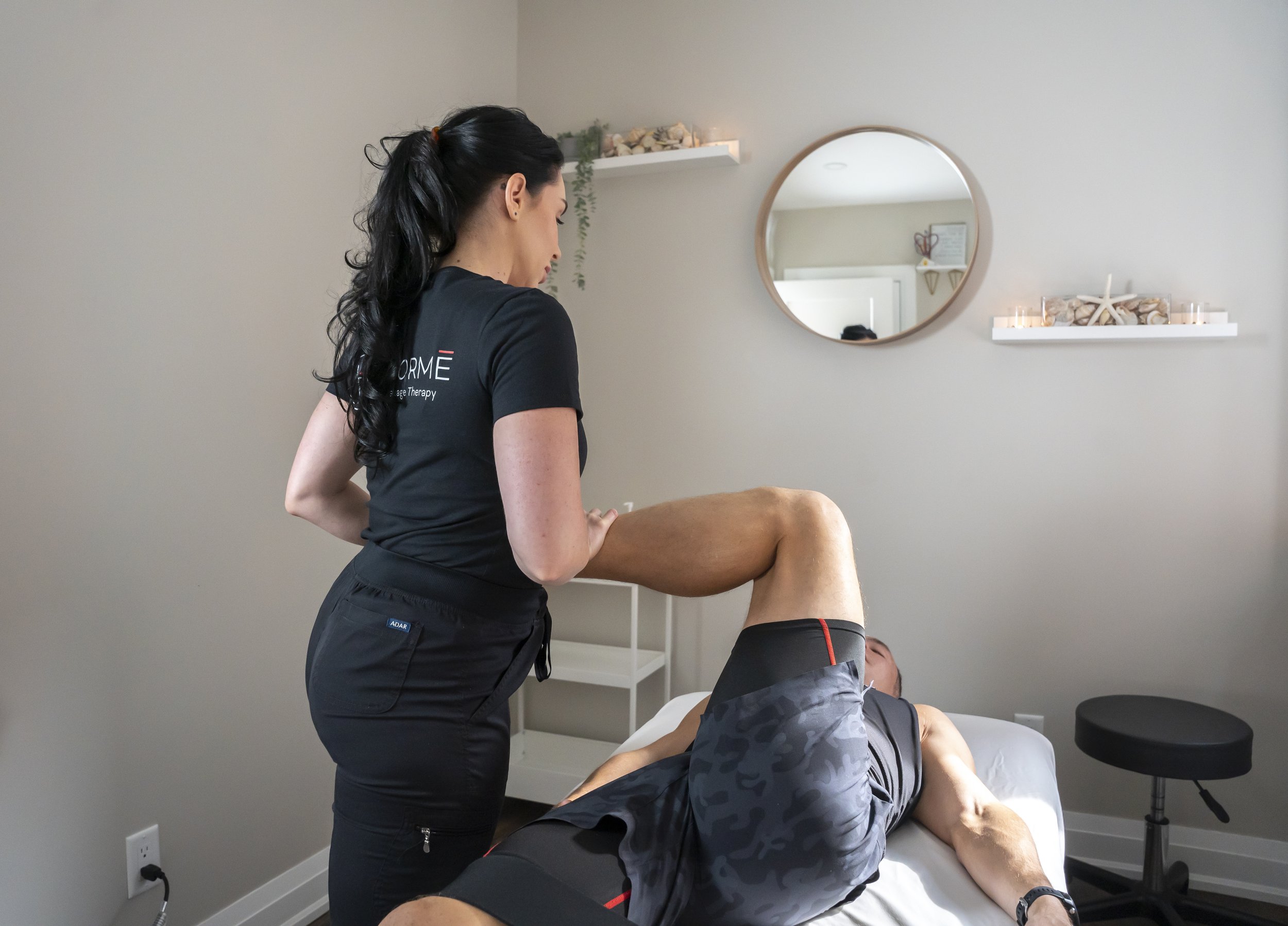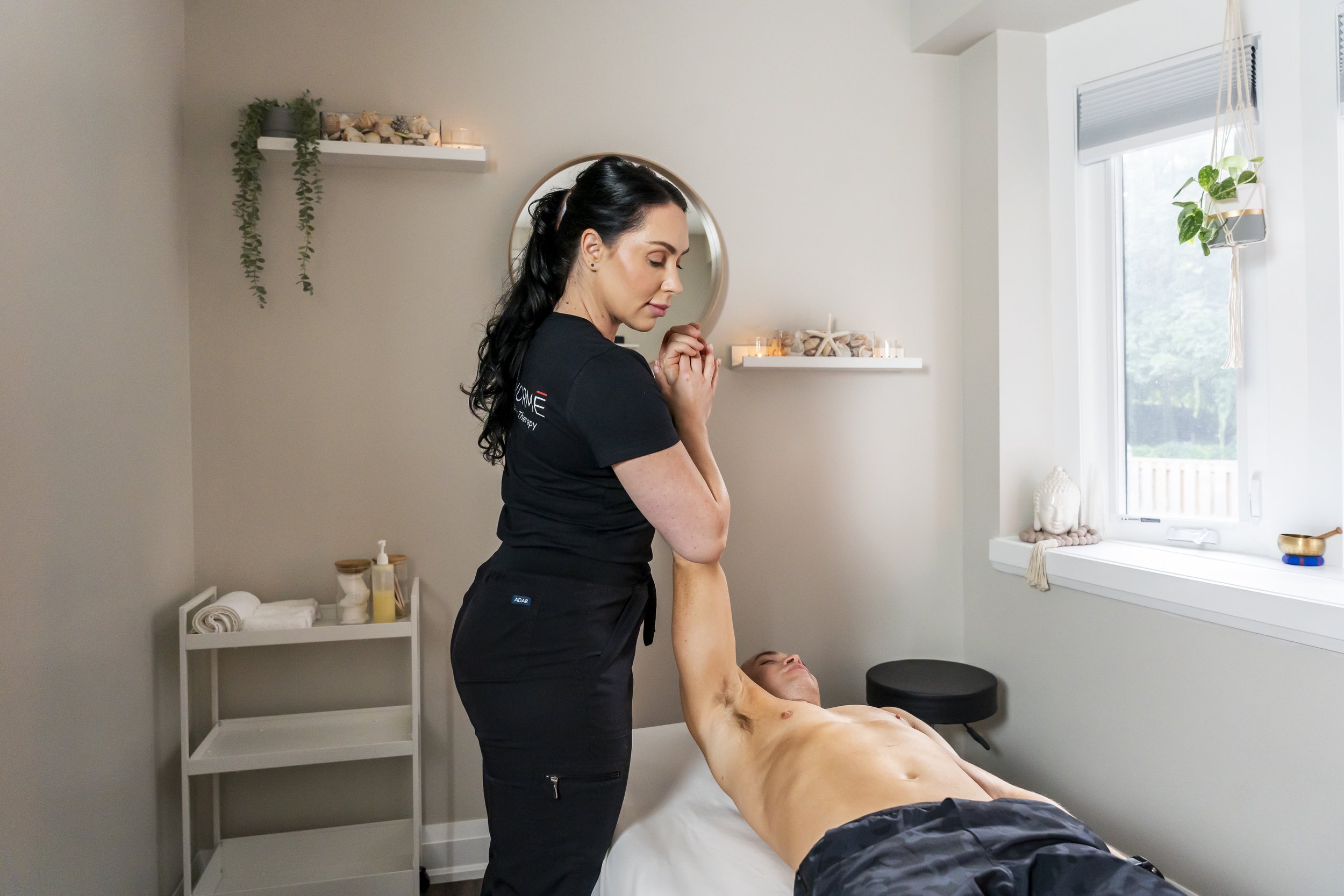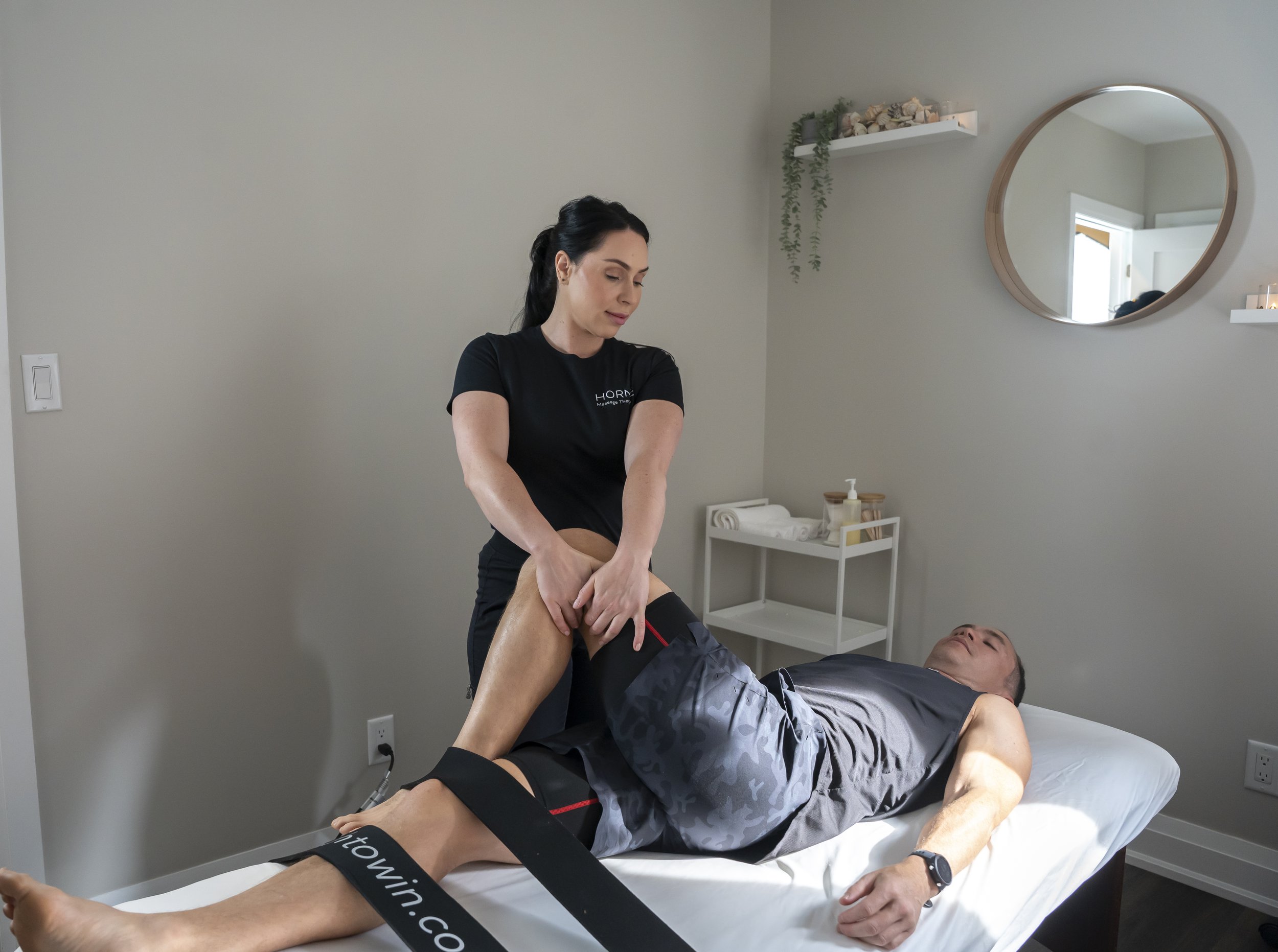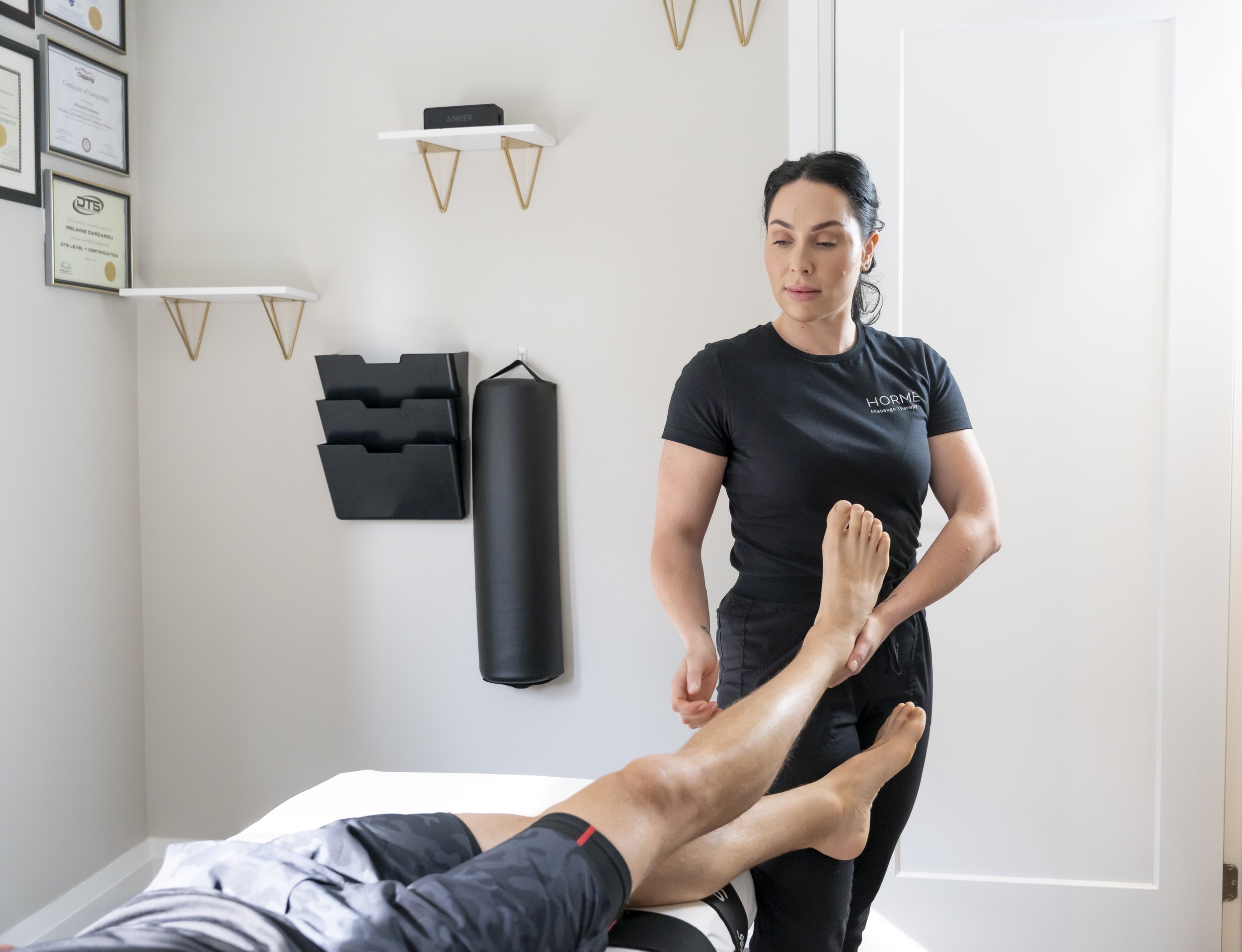Elevate Your Well-Being: [The Comprehensive Benefits of Registered Massage Therapy]
/Welcome to the world of Registered Massage Therapy (RMT), where the healing touch goes beyond mere relaxation. As someone deeply immersed in the realms of therapeutic work, strength training and athleticism, I am thrilled to guide you through the transformative journey of massage therapy. I’ve spent the last 10 years actively working in the health & wellness space and continue to expand my knowledge and personal athletic goals. In this article, we'll unravel the physiological wonders of massage, explore the extensive scope of practice for RMTs in Ontario, and delve into the myriad conditions that can be addressed through this holistic healing modality.
The Physiological Magic of Massage Therapy
Gate Control Theory of Pain: Why does massage therapy stop pain? Let me share a story of a client grappling with chronic pain due to fibromyalgia. Through consistent massage therapy sessions, we witnessed the remarkable impact of the gate control theory of pain. The pressure and rhythmic movements during the massages activated large-diameter nerve fibers, effectively shutting the gate on pain signals. Over time, my client experienced significant relief, highlighting how massage therapy can be a game-changer for chronic pain conditions.
Blood Circulation Enhancement: Imagine your body as a finely tuned machine, and blood circulation as the fuel that keeps it running smoothly. Through massage, we not only ease muscle tension but also enhance blood flow, ensuring vital oxygen and nutrients reach every nook and cranny. Rhythmic movements at varying depths create heat and encourage vasodilation (widening of blood vessels) which allows for more blood to be pumped to the area. The pressure of touch stops pain signals as mentioned in the Gate Control Theory of Pain, but also improves local circulation to tissues that may often not be receiving adequate circulation. This, as result, encourages faster sport recovery, overall better health of tissues, encourages increased lymphatic drainage and lessens aches and pains.
Golgi Tendon Organs and Muscle Spindles: The language of massage is an ongoing dialogue with the nervous system. Another way we speak to the body is through the manipulation of receptors in the tissues. Golgi tendon organs and muscle spindles are the proprioceptive mechanisms in tendons and muscle fibres that provide a constant feedback loop to the brain. They monitor stretch, pressure and tension on the fibres and provide a protective release response when needed. As an RMT, we are trained with techniques to encourage this natural response, allowing us to promote relaxation of tight, overworking muscles for improved range of motion and pain relief. As an athlete, I've come to understand the importance of muscle health. Through massage, we engage with Golgi tendon organs and muscle spindles, promoting reduced muscle tension and improved flexibility. Clients, both athletes and non-athletes, have benefited from this, gaining better control over their movements and experiencing fewer injuries.
Nervous System Regulation: The benefits of massage therapy extend far beyond the immediate sense of relaxation; they reach into the intricate realm of our nervous system. Imagine your nervous system as the conductor of your body's symphony, orchestrating responses to stress, stimuli, and relaxation. When you indulge in a soothing massage, it's not just your muscles that unwind; it's your nervous system finding a harmonious balance. Through gentle strokes and rhythmic movements, massage triggers the parasympathetic nervous system—the rest and digest counterpart to the fight or flight response. This activation leads to a cascade of physiological changes, such as reduced heart rate, lower cortisol levels, and increased production of feel-good neurotransmitters like serotonin and dopamine.
Consider it a conversation with your nervous system, a gentle reminder to shift from the hustle and bustle of everyday stress to a state of tranquility. This connection between massage therapy and nervous system regulation is pivotal in navigating the demands of modern life, providing not only a moment of relaxation but a pathway to sustained well-being.
Beyond the Table: RMTs as Holistic Health Partners
Conditions Beyond Relaxation: The misconception that massage is purely for relaxation overlooks its therapeutic prowess. RMTs in Ontario are equipped to tackle a diverse range of musculoskeletal and neurological conditions, from common muscle aches to complex issues like Alzheimer’s, frozen shoulder, osteoarthritis, sciatica, fibromyalgia, thoracic outlet syndrome, scoliosis, and more. When I first considered going to massage therapy school, my only experience with an RMT had been at a spa setting where the focus was always relaxation and not so much addressing chronic pain. Had I known how much training RMTs received maybe massage school would have come sooner, but I digress. My practice aims to bridge relaxation with therapeutic, combining a gentle soothing environment with a technical focus. To learn more about my practice style and view a list of conditions I treat, please visit my Myofascial Rebalancing page.
Holistic Healthcare Integration: In my practice, I've witnessed the beauty of integrated healthcare. Collaborating with physicians, chiropractors, and physiotherapists, massage therapy becomes a crucial piece in the puzzle of a patient's well-being. Conditions like carpal tunnel syndrome, scoliosis or frozen shoulder can benefit greatly from a multidisciplinary approach, showcasing how RMTs seamlessly fit into the broader healthcare narrative.
Ontario's RMT Scope of Practice: A Healing Canvas
Ontario stands as a beacon for comprehensive RMT practice, governed by the College of Massage Therapists of Ontario (CMTO). The scope of practice is a canvas where RMTs paint a diverse palette of healing. Ontario’s RMT scope of practice involves the assessment of the soft tissue and joints, as well as the treatment and prevention of physical dysfunction and pain. Techniques range from various manual massage techniques to joint mobilizations, stretch techniques, and even exercises for rehabilitation and pain relief. Short of High-Velocity Low-Amplitude Manipulation Techniques used by Chiropractors and Physiotherapists, RMTs can do any manual manipulation.
From what I was told in massage therapy school, RMT's anatomical and physiological training is equivalent to that of a first-year medical student. This this largely because RMTs are medical professionals regulated under the same government body as doctor’s and nurses called the RHPA (Registered Health Practitioners Association). Furthermore, RMTs are rigorously tested to meet the Standards of Practice governed by the College of Massage Therapists of Ontario. Canadian trained RMTs are among the highest regarded therapists in the world because of this. This depth of understanding ensures that each massage is not merely a series of motions but a precise and targeted therapy that addresses your unique needs.
Elevating Your Well-Being
As you embark on or continue your wellness journey, consider the transformative potential of Registered Massage Therapy. It's more than just a soothing experience—it's a holistic approach to health and healing. From the physiological wonders that enhance your body's functionality to the extensive scope of practice in Ontario, massage therapy stands as a powerful ally in your pursuit of well-being.
Experience the comprehensive benefits of Registered Massage Therapy by scheduling a session with a qualified RMT, or with me. Share your thoughts, experiences, or questions in the comments, and let's build a community where well-being is a shared journey.







